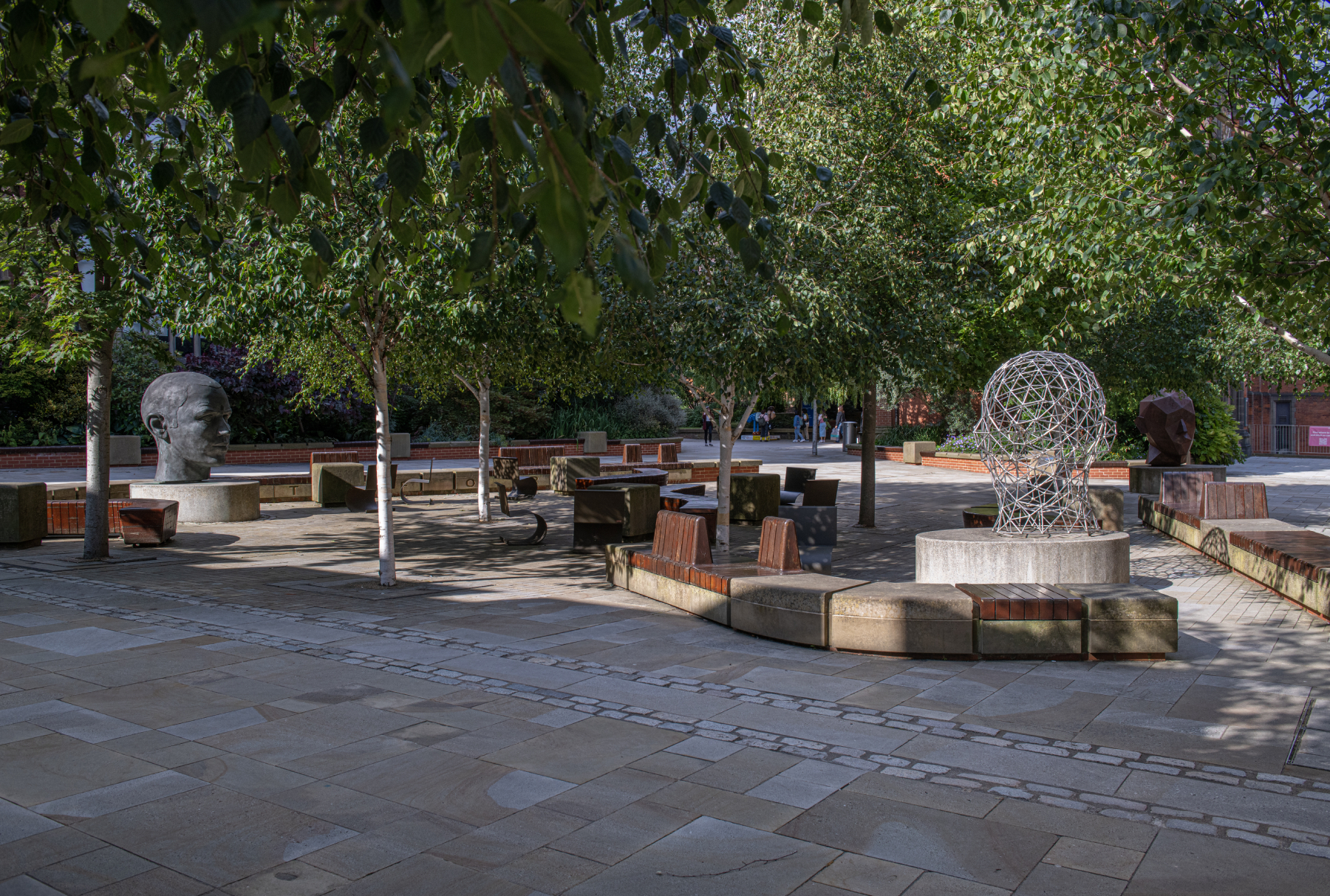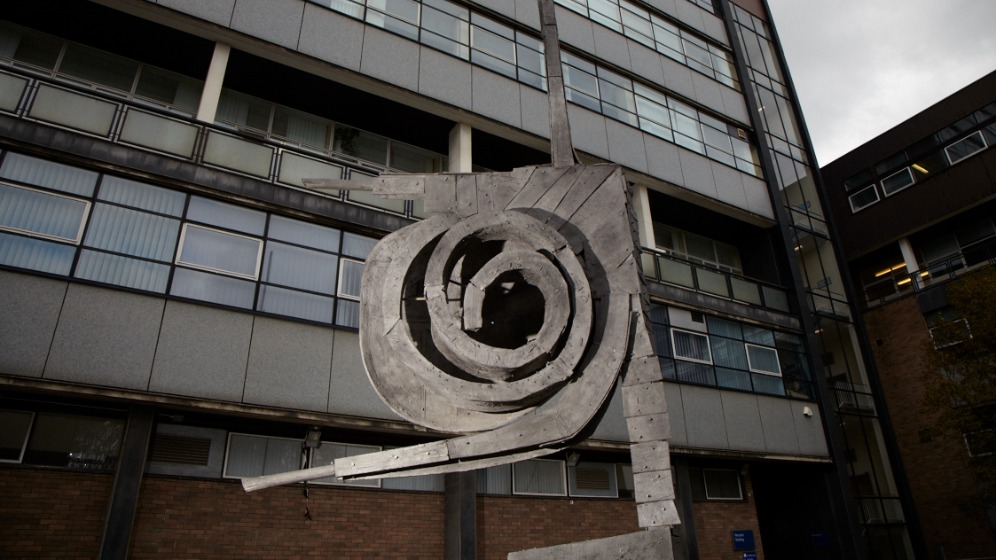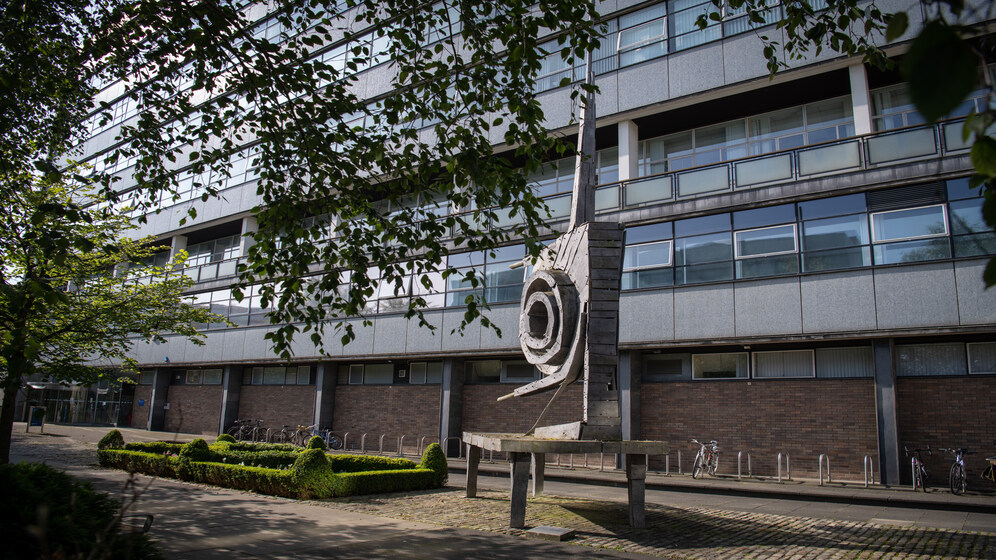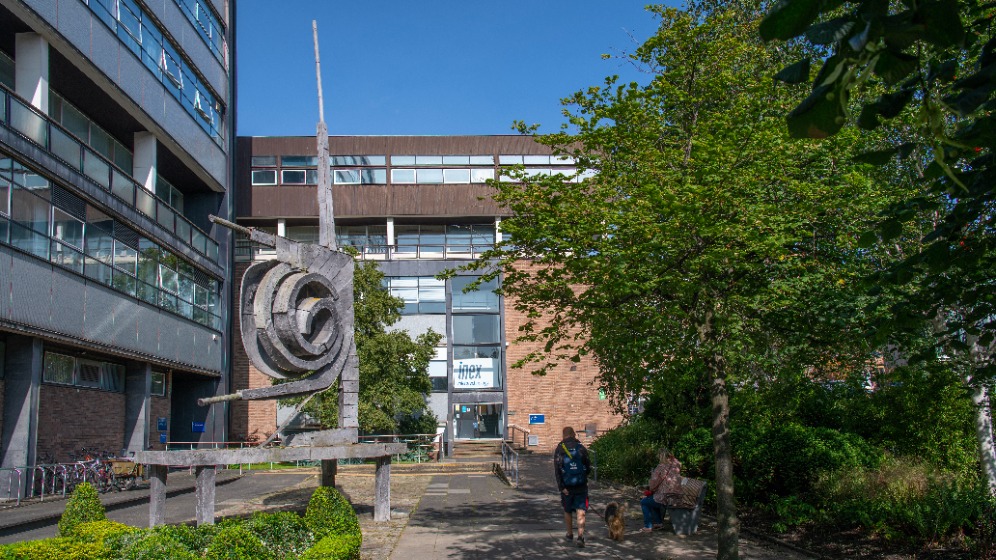Spiral Nebula by Geoffrey Clarke
Discover this unique piece of spiral art in front Newcastle University’s Herschel Building.
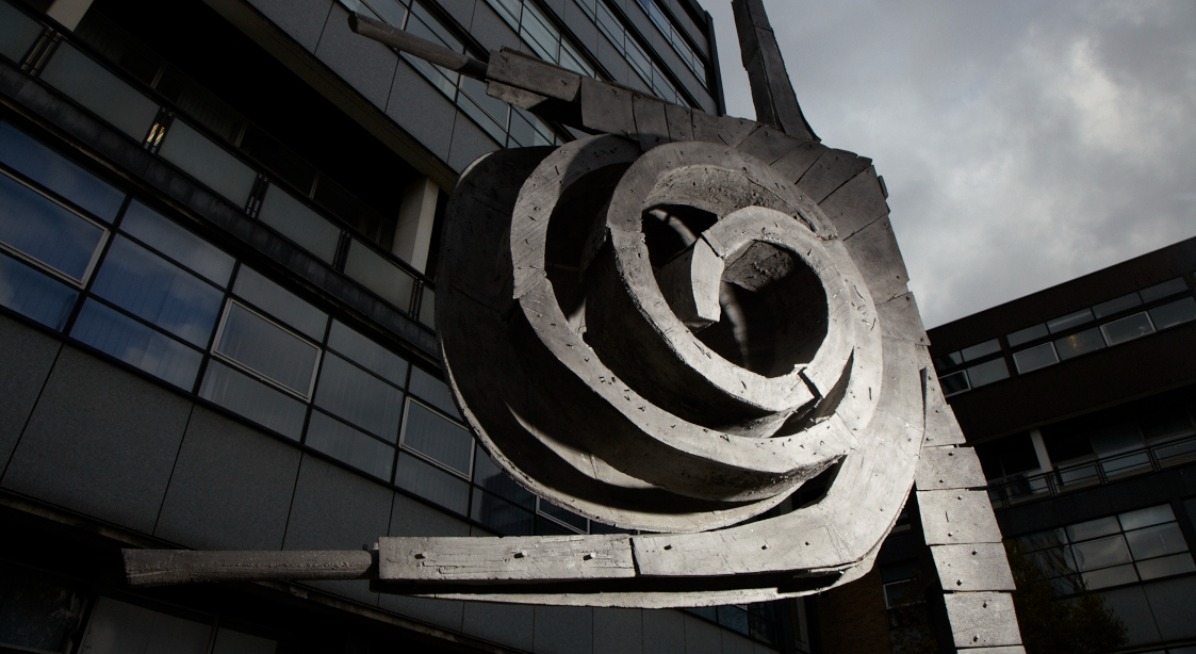
The artwork
Spiral Nebula is an important example of post-war, 20th-century public art. It was originally commissioned in 1962 by the architect Sir Basil Spence, to be situated in front of the new Physics Building – the Herschel. The piece was designed to complement the building’s modernist architecture.
Clarke’s work is also distinctive and innovative in that it incorporates a platform, enabling it to be free-standing – retaining a sculptural and spatial presence without the use of a plinth.
We can interpret the sculpture as a symbol of scientific advances in the 1960s. It reflects the subjects being explored in the Herschel Building’s Physics department at that time, which – to this day – include Astronomy and Astrophysics.
Geoffrey Clarke’s Spiral Nebula has the appearance of being constructed from wooden slats, but Clarke used a pioneering technique to create it. Utilising aluminium rather than traditional bronze, Clarke adapted the long-established 'lost wax' method, which involves carving polystyrene blocks with a heated instrument and then pouring in molten metal to vaporise the polystyrene.
The conservation
In 2012 conservation of the sculpture was undertaken by Geoffrey Clarke’s son, Jonathan, who is also a sculptor. Jonathan collaborated with Andrew Pawsey: the son of Clarke’s assistant who helped him create the original Spiral Nebula for Newcastle University in 1962.
This conservation work was supported by the Henry Moore Foundation, INTO Partnership and the Catherine Cookson Foundation. In 2016, the sculpture was given Grade II-listed status, in recognition of its historic and artistic significance.
The artist
Spiral Nebula is one of the most striking examples of the distinctive and imaginative quality of Geoffrey Clarke’s work.
Basil Spence and Clarke collaborated on a range of other projects in the 1960s, most notably at Coventry Cathedral. However, when Spiral Nebula was originally unveiled, it caused a dispute between Clarke and Spence.
Spence thought that the sculpture’s waxed finish distracted attention from the building. A month later, the sculpture was flame-blasted in order to produce a much duller surface.
